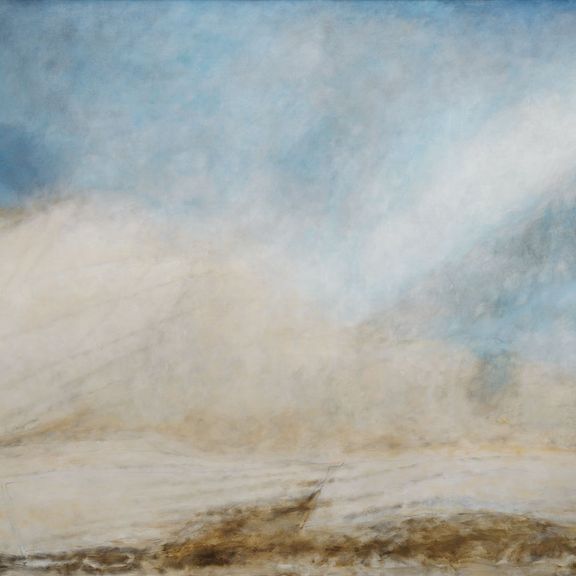
oil on canvas
1930
bottom right
120 × 40 cm
frame
Starting price: 4,000,000 CZK Final price: 8,520,000 CZK
85th Auction, Lot 52 Captivating and overall unique work by František Muzika is a highly representative example of the interwar period of the artist’s work. Although Muzika was ranked among the pioneers of Surrealism in Czechoslovakia, his nature never allowed him to vent his irrational subconscious thoughts. In his work, we can always observe the aspiration to classical order and romantic sentiment. This substantiality has been described as early as the beginning of 1930s by Czech avant-garde writer Vítězslav Nezval in his text related to the Poesie 1932 exhibition, a fundamental presentation of Surrealism on the Czech art scene, in which Muzika took part. Moreover, at the same time influence of Picasso’s Lyrical Cubism appeared in his work, which Muzika reflected with unquestionable individualistic expression and energy of his own. Ultimately, it resulted in this highly suggestive, even magically impressive canvas, Torso I, one of the most exhibited and reproduced of Muzika’s works of this time. The author suppressed the surrounding space and focused on the substance of a conventionalised female body, whose curves transform into a biomorphic shape, which, however, does not lose grace. The composition of the headless and armless torso is probably also in the manner of Picasso. Muzika also used the outlined drapery as an opportunity for further work with colours and their shading. This excellent painting is thus a great example of the artist’s smooth transition from fading imaginative Cubism to Surrealism.The artwork has been frequently exhibited at Muzika’s solo and group exhibitions; for the first time in 1932 in the Aventine Mansard (Aventinská mansarda, Prague), then more importantly at the fundamental exhibition Poesie 1932 (S.V.U. Mánes, Prague 1932, cat. no. 63). Later on, the painting appeared also in the author’s retrospective exhibition in the Wallenstein Riding School (Valdštejnská jízdárna, Prague 1981, cat. no. 33). Assessed during consultations by prof. J. Zemina and PhDr. R. Michalová, Ph.D. From the attached expertise by PhDr. K. Srp: “[…] This painting can be, with no hesitation, designated as a turning point in the work of František Muzika, who, at the turn of 1920s and 1930s, clearly went through a rethinking of Cubism, which he interpreted in soft, lyric, biomorphic morphology on the edge of abstraction. […]“







